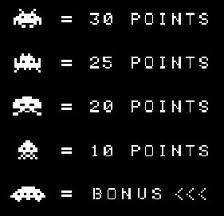Smart employers provide a wellness-supportive work environment and
try to nudge their employees into healthier lifestyle choices. They’re
not being nice, they’re being smart.
This article and
this article refer to the latest Chartered Institute of Personnel and Development’s (CIPD’s)
Employee Outlook
survey. Having a job makes people happy, the British government’s
wellbeing report has revealed, but experts say that workers’ wellbeing
really depends on employee engagement. The report showed that engaged
employees score much more highly against the Office for National
Statistics’ ‘happiness index.’
Don’t get me started on happiness indexes but the notion sounds about
right. “Good managers spend time coaching and developing, providing
high quality feedback, and rewarding and recognising good performance.”
“While satisfaction with immediate managers is generally strong,
there are continuous issues around a lack of personal development –
including coaching on the job, discussing learning and development and
giving feedback on performance.
“Perceptions of leaders also need to improve, with views on leaders’
consultation being particularly poor and trust and confidence in leaders
falling further this quarter.”
I used to work in local Government. When I started, there was a
‘Rubbish’ department. It became ‘Refuse and Recycling.’ Last I heard, it
had become ‘Waste Minimisation.’ These aren’t just superficial labels,
they represent a shift in thinking. A similar shift has occurred when it
comes to wellness at work. It’s gone from ambulances at the bottom of
cliffs (sometimes literally) to prevention and a broadening of scope
from the merely physical and work-related.
I’ve worked with organisations that offer subsidised gym memberships,
10,000 Step programmes and reward-point-scoring health insurance
schemes. In-house Occupational Therapists teach posture and
micro-pausing to the masses, ergonomic furniture is installed while Sven
the masseuse takes your shoulder massage booking. I actually saw one
company intranet’s homepage announcing the boss was paying for a diet
specialist to come in and speak, although this was right next to an
advert for the social club’s fish ‘n’ chip evening. I love those
situations, like my local supermarket which had a sale bin of toothpaste
right next to a sale bin of chocolate bars – 5-for-$4! An aisle of
value but also an aisle of irony.
My point here is that even if you’re not an employer that doles out
massages and gym memberships, your workplace has a tremendous capacity
to affect your people’s physical and mental health one way or the other.
That some employers make efforts to bolster worker wellness isn’t
altruistic. They reap the benefits of attendance, attitude, engagement,
productivity and more. A study published in the U.S. Journal of
Occupational and Environmental Medicine found that for every dollar a
worker’s illness cost, the average impact on their employer’s
productivity was $2.30. So, for example, preventing staff illnesses
causing $10,000 of medical costs could enhance your bottom line by
$23,000.
I read a book last Christmas called ‘The Blue Zone. Lessons for
living longer from those who’ve lived the longest’ by Dan Buettner. He
and his team have studied the four little pockets of humanity where they
have a ridiculously long length and quality of life. (None are in New
Zealand. They’re in Sardinia, Costa Rica, Japan and California.) There’s
a quick online quiz, after which it tells you how long they reckon
you’ll live if you keep going the way you’re going and how long you
could
live if you take their advice. Take the test but do it with friends.
(Ironically, doing it with friends is part of their advice.)
I need to get a pet and at least one more friend at ‘organ-donor’
level. Otherwise, I’m pretty sweet. You might be pleasantly surprised at
their alcohol and exercise advice. Having a reason to live is important
and, for some, work can provide that. Friendship is generally good for
your health but there are different levels of friend. I think we all
know that. We might not have it written down but we have a ‘friend
matrix’ somewhere. When you’re a kid, you need a friend with an X-Box.
When you leave home, you need a friend with a van to help you move. When
you’re my age, you need a friend with a spare (functional) kidney.
In 2007, Gallup research found that “having a best friend at work”
increased the likelihood of someone being engaged at work by 700%. Sarah
Burgard from the University of Michigan has shown that job insecurity
(fear) causes more illness than actually losing a job. Disconnected
employees are more likely to get sick and more likely to miss work. A
study by the Confederation of British Industry estimated that fifteen
percent of illness days taken were not due to actual illnesses.
A recent episode of TV’s ‘The Biggest Loser’ was filmed in New
Zealand. I presume New Zealand paid for this because it seemed that the
phrase, “In New Zealand” had to be said at least every ninety seconds.
“I’m eating an apple IN NEW ZEALAND.” “I never thought I’d be doing
push-ups IN NEW ZEALAND.”
There is a lot of time on screen of exercise, dieting and dramatic
weigh-ins which probably makes for good TV but is unlikely to lead to
ongoing long-term wellness-supportive lifestyle changes. What does help
are social proof, goals, regular non-judgemental behaviour-based
feedback and a sense of purpose. Not surprisingly (hopefully), these
things are also powerful drivers of workplace behaviours that support
not only wellness but productivity and profitability.
An obese person sat next to me on the plane recently. Despite he and I
both paying for one seat, he was taking up a good third of my space. I
couldn’t believe this was happening to me IN NEW ZEALAND.





